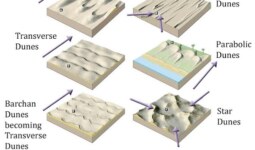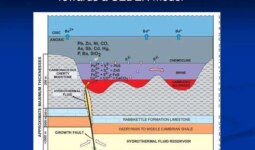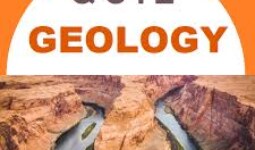The Earth’s crust is divided into two major types: oceanic crust and continental crust. These two types of crust differ significantly in composition, structure, thickness, and other physical and chemical properties. Understanding the differences between oceanic and continental crust is fundamental to geology, as it helps explain various geological processes, such as plate tectonics, mountain building, and the formation of ocean basins. Here’s a detailed comparison of oceanic crust and continental crust:
1. Composition
Oceanic Crust:
- Basaltic Composition: Oceanic crust is primarily composed of basalt, which is a dark-colored, fine-grained igneous rock. Basalt is rich in magnesium and iron (mafic minerals), giving it a denser, darker appearance.
- Silica Content: Lower silica content compared to continental crust, typically around 50-60% silica.
- Minerals: The primary minerals found in oceanic crust are olivine, pyroxene, and plagioclase feldspar.
Continental Crust:
- Granitic Composition: Continental crust is mainly composed of granite, a light-colored, coarse-grained igneous rock. Granite is rich in silica and aluminum (felsic minerals), which gives it a lighter color.
- Silica Content: Higher silica content, generally ranging from 60-70% or more.
- Minerals: The predominant minerals in continental crust include quartz, potassium feldspar, and mica.
2. Thickness
Oceanic Crust:
- Thickness Range: Oceanic crust is relatively thin, typically about 5-10 kilometers (3-6 miles) thick.
- Uniformity: The thickness of oceanic crust is more uniform compared to continental crust, reflecting its formation at mid-ocean ridges.
Continental Crust:
- Thickness Range: Continental crust is much thicker, ranging from about 30 to 50 kilometers (18-31 miles) on average, with some areas (like mountain ranges) reaching up to 70 kilometers (43 miles) thick.
- Variability: Continental crust thickness is highly variable, depending on geological processes such as mountain building and erosion.
3. Density
Oceanic Crust:
- Higher Density: Oceanic crust is denser than continental crust, with an average density of about 3.0 g/cm³.
- Reason for Density: The higher density is due to the presence of mafic minerals like olivine and pyroxene.
Continental Crust:
- Lower Density: Continental crust has a lower density, averaging around 2.7 g/cm³.
- Reason for Density: This lower density is due to the abundance of felsic minerals, such as quartz and feldspar.
4. Age
Oceanic Crust:
- Younger Age: Oceanic crust is generally much younger than continental crust, with most of it being less than 200 million years old.
- Reason for Youth: Oceanic crust is constantly being formed at mid-ocean ridges and recycled back into the mantle at subduction zones, leading to its younger age.
Continental Crust:
- Older Age: Continental crust contains some of the oldest rocks on Earth, with ages exceeding 4 billion years in some regions.
- Reason for Age: Continental crust is less frequently recycled compared to oceanic crust, allowing it to accumulate and preserve older rocks.
5. Formation
Oceanic Crust:
- Mid-Ocean Ridges: Oceanic crust forms at mid-ocean ridges, where tectonic plates are pulling apart. Magma rises from the mantle, cools, and solidifies to form new oceanic crust.
- Spreading Centers: The continuous formation of oceanic crust at spreading centers results in symmetrical patterns of crustal ages on either side of the ridge.
Continental Crust:
- Accretion and Recycling: Continental crust forms through various processes, including volcanic activity, sedimentation, and the accretion of terranes. It also forms through the recycling of oceanic crust and sediments during subduction.
- Complex Processes: The formation of continental crust is a complex process involving the partial melting of lower crustal rocks, magma differentiation, and tectonic collisions.
6. Tectonic Behavior
Oceanic Crust:
- Subduction: Due to its higher density, oceanic crust readily subducts (sinks) beneath continental crust or other oceanic crust at convergent plate boundaries, leading to the formation of deep ocean trenches and volcanic arcs.
- Spreading and Rift Zones: Oceanic crust is continuously created and spread apart at divergent boundaries, such as mid-ocean ridges.
Continental Crust:
- Buoyancy: Continental crust is less dense and more buoyant, so it resists subduction. When continental crust collides with other continental crust, it leads to the formation of mountain ranges (e.g., the Himalayas).
- Stable Platforms: Continental crust forms stable platforms that are less frequently recycled compared to oceanic crust.
7. Geological Features
Oceanic Crust:
- Features: Oceanic crust is characterized by features such as mid-ocean ridges, abyssal plains, oceanic trenches, and seamounts.
- Magnetic Anomalies: Patterns of magnetic anomalies on the ocean floor are due to the symmetric formation of oceanic crust at spreading centers, recording the Earth’s magnetic field reversals.
Continental Crust:
- Features: Continental crust exhibits a wide range of geological features, including mountain ranges, plateaus, shields, basins, and rift valleys.
- Diverse Landscapes: The complex formation and evolution of continental crust lead to diverse landscapes and rock types, including sedimentary, igneous, and metamorphic rocks.
Conclusion
The differences between oceanic and continental crust are fundamental to understanding the Earth’s geology. These differences influence how tectonic plates interact, the formation of geological features, and the processes that shape the Earth’s surface over geological time. The interaction between these two types of crust plays a crucial role in the dynamic nature of the planet, driving processes such as plate tectonics, volcanic activity, and the creation of various landforms.




Leave a comment